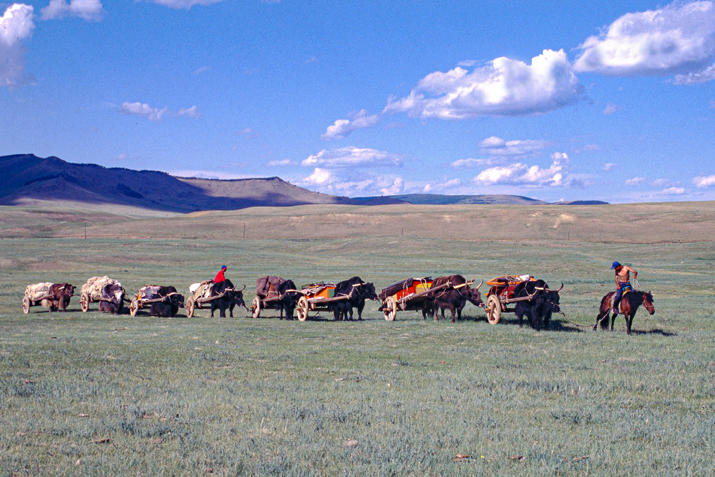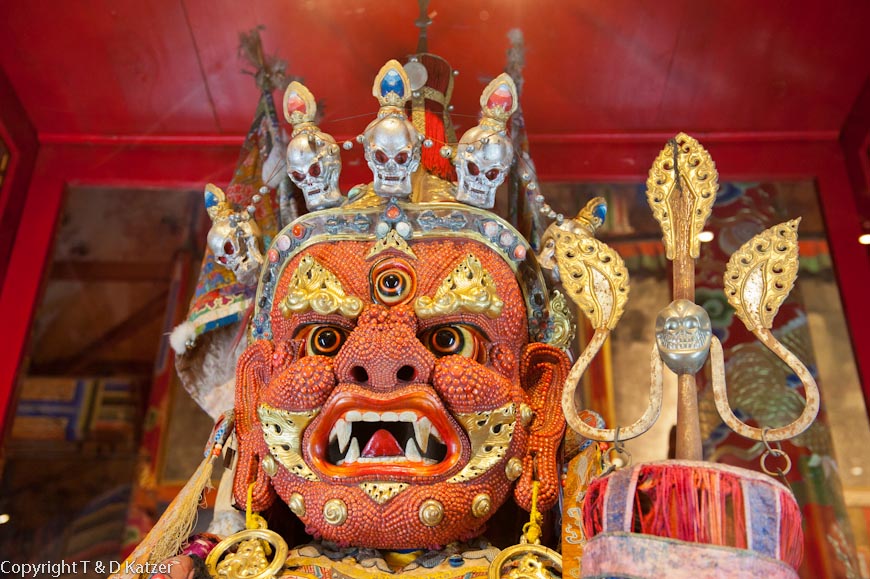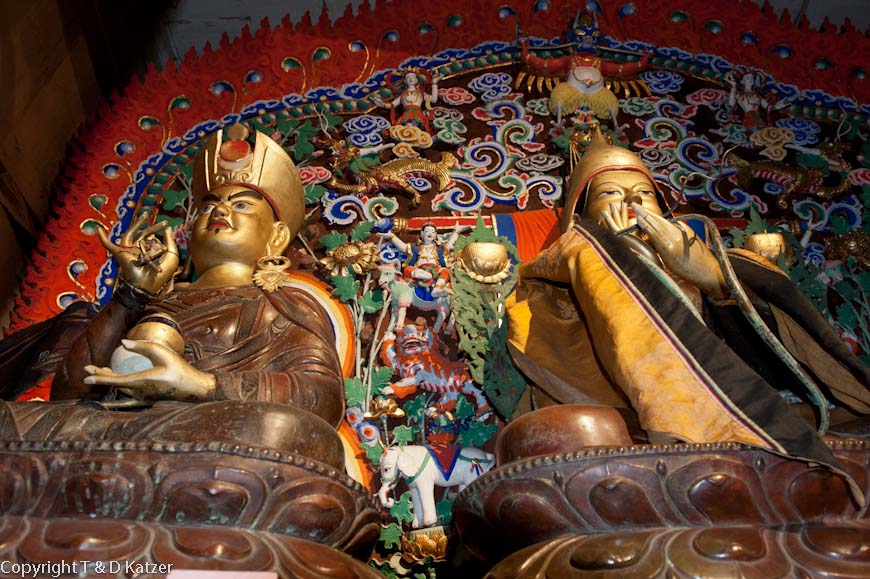
Tsam dance, shamanistic traditions, masks and gods
N 47°55'513'' E 106°55'559''
Day: 9
Sunrise:
05:29 pm
Sunset:
8:27 pm
Temperature – Day (maximum):
29 °C
Temperature – day (minimum):
23 °C
Temperature – Night:
20 °C
Latitude:
47°55’513”
Longitude:
106°55’559”
Maximum height:
1315 m above sea level




While I sit in our apartment writing about our experiences, as I do every day, Tanja sets off first thing in the morning to track down our parcels using the tracking numbers. “You’re still stuck in Beijing,” she says, calling me on my cell phone. “So we have a good chance of getting them before our onward journey to Erdenet,” I hope. “If we’re lucky. How are you getting on with the writing?” “Step by step. Just don’t stop. We should experience a little less then I won’t have to write too much,” I joke. “Is the update already on the website?” I ask. “Yes, but not the pictures yet. They still have to program something special. They promised us that next week.” “Okay, it’ll work out. Are you meeting Togtokh now?” “Yes, we’ll go to the main post office and check whether one of the parcels has arrived in the meantime. Togtokh wants to go to the notary with me afterwards. I’ll then get notarized permission to collect parcels from your P.O.Box without Togtokh’s presence.” “Have fun then,” I say, whereupon we end the conversation and I continue writing.
It is quite cool in the apartment. So I hardly notice anything of the summer outside. Tanja calls back later and tells me where I can meet Togtokh and her for lunch. I take a fleece jacket with me and am surprised how hot it is. We satisfy our hunger in a restaurant and set off with our Mongolian friend to visit the former seat of the state oracle, the monastery of the Choijin Lama.
“This is where you’ll find the major sights of Ulan Bator,” says Togtokh kindly, explaining that in 1938 the monks were chased out and mostly murdered on the charge of planning a counter-revolution. In the middle of the metropolis, beset by high-rise buildings and skyscrapers under construction, two-storey, curved roofs crouch, looking more like Chinese pagodas than Buddhist buildings. Their reddish-brown brick gables bear weathered gray bricks. Astonished to find such an oasis of peace in the hustle and bustle of the center, we stroll through the small complex, which is now a museum of Buddhism. “Look at that up there,” whispers Tanja. I lean my head back, look up at the ceiling and see a large painting of human bodies bound together by intestines, with their limbs and heads severed, or with hearts, lungs, kidneys and other organs torn out of them. “My God, that looks scary,” I whisper. Our guidebook tells us that the then Lama Choijin Luwsankhaidaw invoked the patron god Choijin here. Choijin means patron god of religion. “It says here that these pictures are to show how to deal with the enemies of religion and that these depictions show the immense power of Choijin, but also make it clear that every life is finite. They are meant to show sinners and unbelievers what they can expect in hell,” I read quietly.
We wander through the mystical-looking corridors for a long time, looking at more impressive tapestries, oversized sculptures and numerous dance masks, some of which are terrifying. In the anteroom of the temple, we admire the gods of religious protection, which symbolize and are supposed to rule the four cardinal points. They were revered as the four great kings who had the following meanings: Giving joy, having compassion, giving alms and protecting people or religions.
Suddenly, strange Mongolian music penetrates through the temple walls into the sacred rooms. Curious, we follow the sounds and encounter a dance performance. We sit down on one of the benches and listen to the young musicians, the sounds of the morin chuur, a fiddle whose neck is carved in the shape of a horse’s head, and the interesting-sounding throat singing, which traditionally can only be learned by men. We are fascinated by the Tsam dance, a complex ritual that combines tantric and shamanistic traditions. Hours later, we leave the site of our excursion into a foreign world and find ourselves back on the dusty road dominated by cars. “Let’s go to the restaurant up there,” Tanja suggests. “Hm, should actually archive the pictures I’ve just taken.” “You can’t always work Denis. Now let’s go up there, take in the beautiful temple and enjoy the evening.” “Okay, you’ve convinced me,” I reply. Minutes later, we settle down at one of the tables from where we can look out over the roofs of the Chijin Lama Monastery, glowing golden in the evening sun.
We look forward to your comments!

